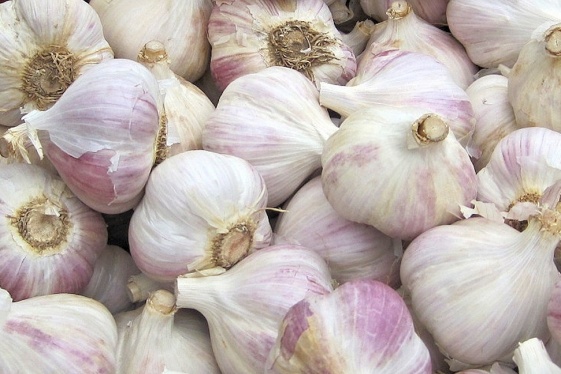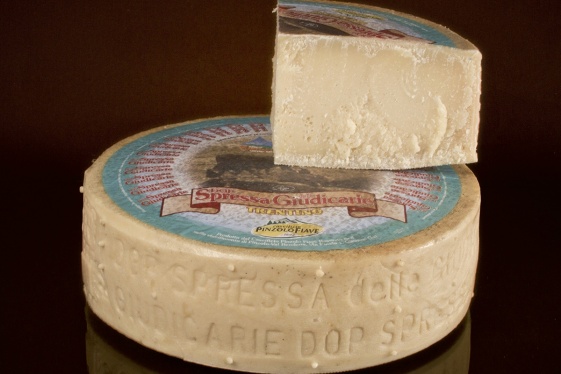
MIPAAF
The Ministry of Agriculture and Forestry (Ministero delle Politiche Agricole Alimentari e Forestali – MIPAAF) develops and coordinates the lines of agricultural, forestry, agri-food and fisheries at the national, European and international level. http://www.politicheagricole.it/
Italian flavors: Modena Balsamic Vinegar
There have always been different types of vinegar made from grape must in Modena, which have developed in accordance with the history of various recipes, different methods of preparation and aging. The origin of these products dates back to ancient Roman traditions. The term balsamic is relatively young, however, and was used for the first time in...
Italian flavors: Bella della Daunia Oil
“Bella di Cerignola” olives have been cultivated since time immemorial. Some believe that they come from the “Orchites” olives of the Romans, others believe they were introduced from Spain before 1400 AD. However, since there is no evidence of them among native Spanish varieties, they should be considered a native variety of Cerignola in ancient Da...
Italian flavors: White Veal from the Central Apennines
The origins of the three different breeds of Vitellone Bianco dell'Appennino Centrale IGP (White Veal from the Central Apennines) are ancient and distinct. The Romagnola breed comes from the Caucasus region of the Ukraine and arrived in Italy with Agilulf’s Lombards in the fourth century A.D. However, it was the engineer Leopoldo Tosi, who created...
Italian flavors: Polesano White Garlic
The presence of garlic in the Polesine area dates from the Romans who built reclamation works and created agricultural land by greatly modifying the hydrogeology of the area. Evidence of this comes from the writings of Perretto and Marangano in the publication “La Centuriazione dell’Agro di Adria” in which the cultivation of garlic is described as...
Italian flavors: Spressa delle Giudicarie Cheese
Spressa delle Giudicarie DOP (Protected Designation of Origin) is one of the oldest cheeses of the Alps and one of the most recent to receive DOP status within Italy. Definitive approval was only obtained on 26 January 2004, when it was entered the Register of Protected Designations of Origin, which protects its quality within Italy and Europe. Spr...
Italian flavors: Parma Prosciutto
The air in the hills of Parma is fragrant: once the sea breeze from the Versilia coast has acquired the aroma of the pine trees, it is scoured by the karst Cisa mountains, losing all its saltiness, and finally wafts over scented chestnut groves. It is therefore a dry air, ideal for the curing process. An essential condition for obtaining Prosciutt...
Italian flavors: Montasio Cheese
Dairy production in Friuli began in 1200 A.D. thanks to the efforts of the Benedictine monks of the Moggio Udinese Abbey. Montasio cheese takes its appellation from the mountain range in the Julian Alps of the same name, on the southern slopes of which there lies a vast plateau, home to the Montasio dairies and a wealth of pastures. A second unifyi...
Italian flavors: Garda Oil
There is no clear indication of the precise moment when olives were first cultivated on the land around Garda. Some writings mention a climatically favorable period between the 3rd century BC and the 3rd century AD, to which an initial, slow but progressive introduction of olive growing can be traced. This is confirmed by various plant residues dis...
Italian flavors: Mortadella Bologna
The origins of Mortadella Bologna are to be found in the area of ancient Etruscan Felsina and the Bonomia of the Gallic Boii, places rich in oak forests that provided tasty acorns for the numerous local swine, both wild and domesticated. There are two theories regarding the origin of the name: one is that it derives from “murtatum”, meaning meat fi...
Italian flavors: Provolone Valpadana
Provolone Valpadana was created in the region between the Lambro and Adda rivers thanks to the reclamation and canalisation of the waters by the Cistercian monks. Its creation was the result of an encounter between the South Italian cheese culture of spun curd and the approach to cheese and dairy found in the Po Valley. In fact, cheeses known as “...
Italian flavors: Ispica New Carrot
Carota Novella di Ispica first made their appearance in 1955, but were not cultivated and exported until 1968. The merit for this goes to the Curto farm, which also indicated the production area under the Carota Novella di Ispica name, which was later established definitively. Among the first farmers to grow “Ispica New Carrots” were the Caia broth...
Italian flavors: Calabria Liquorice
The liquorice plant was most likely imported to Calabria by the Greeks around 700 BC. These places have the ideal microclimate and habitat that allowed the development of a different ecotype, as shown by the genetic mapping that allows its differentiation from liquorice coming from other sources. To understand the origins and development of this a...














